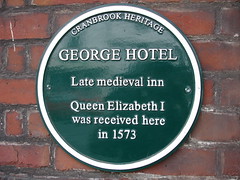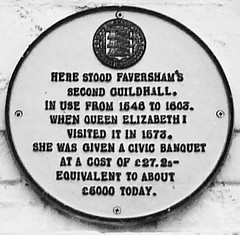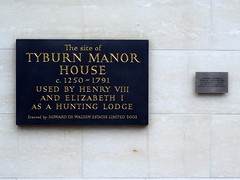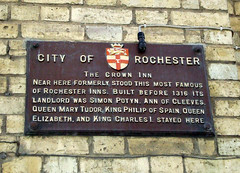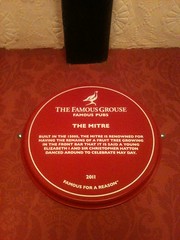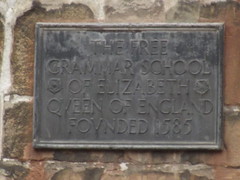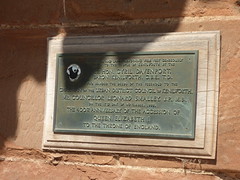

Queen Elizabeth I of England
(1533-1603)
woman and Queen of England (1558-1603)
Died aged c. 70
Wikidata WikipediaElizabeth I (7 September 1533 – 24 March 1603) was Queen of England and Ireland from 17 November 1558 until her death in 1603. Elizabeth was the last of the five House of Tudor monarchs and is sometimes referred to as the "Virgin Queen". Elizabeth was the daughter of Henry VIII and Anne Boleyn, his second wife, who was executed when Elizabeth was two years old. Anne's marriage to Henry was annulled, and Elizabeth was for a time declared illegitimate. Her half-brother Edward VI ruled until his death in 1553, bequeathing the crown to Lady Jane Grey and ignoring the claims of his two half-sisters, the Catholic Mary and the younger Elizabeth, in spite of statute law to the contrary. Edward's will was set aside and Mary became queen, deposing Lady Jane Grey. During Mary's reign, Elizabeth was imprisoned for nearly a year on suspicion of supporting Protestant rebels. Upon her half-sister's death in 1558, Elizabeth succeeded to the throne and set out to rule by good counsel. She depended heavily on a group of trusted advisers led by William Cecil, whom she created 1st Baron Burghley. One of her first actions as queen was the establishment of an English Protestant church, of which she became the supreme governor. This Elizabethan Religious Settlement was to evolve into the Church of England. It was expected that Elizabeth would marry and produce an heir; however, despite numerous courtships, she never did. She was eventually succeeded by her first cousin twice removed, James VI of Scotland; this laid the foundation for the Kingdom of Great Britain. She had earlier been reluctantly responsible for the imprisonment and execution of James's mother, Mary, Queen of Scots. In government, Elizabeth was more moderate than her father and half-siblings had been. One of her mottoes was "video et taceo" ("I see and keep silent"). In religion, she was relatively tolerant and avoided systematic persecution. After the pope declared her illegitimate in 1570 and released her subjects from obedience to her, several conspiracies threatened her life, all of which were defeated with the help of her ministers' secret service, run by Francis Walsingham. Elizabeth was cautious in foreign affairs, manoeuvring between the major powers of France and Spain. She half-heartedly supported a number of ineffective, poorly resourced military campaigns in the Netherlands, France, and Ireland. By the mid-1580s, England could no longer avoid war with Spain. As she grew older, Elizabeth became celebrated for her virginity. A cult of personality grew around her which was celebrated in the portraits, pageants, and literature of the day. Elizabeth's reign became known as the Elizabethan era. The period is famous for the flourishing of English drama, led by playwrights such as William Shakespeare and Christopher Marlowe, the prowess of English maritime adventurers, such as Francis Drake and Walter Raleigh, and for the defeat of the Spanish Armada. Some historians depict Elizabeth as a short-tempered, sometimes indecisive ruler, who enjoyed more than her fair share of luck. Towards the end of her reign, a series of economic and military problems weakened her popularity. Elizabeth is acknowledged as a charismatic performer ("Gloriana") and a dogged survivor ("Good Queen Bess") in an era when government was ramshackle and limited, and when monarchs in neighbouring countries faced internal problems that jeopardised their thrones. After the short reigns of her half-siblings, her 44 years on the throne provided welcome stability for the kingdom and helped to forge a sense of national identity.
DbPedia
Family tree
Commemorated on 12 plaques
George Hotel Late medieval inn Queen Elizabeth I was received here in 1573
Stone Street, Cranbrook, United Kingdom where they was received (1573)
Here stood Faversham's second guildhall. In use from 1546 to 1603. When Queen Elizabeth I visited it in 1573 she was given a civic banquet at a cost of £27.2s- equivalent to about £5000 today.
Faversham's second guildhall, Court Street, Faversham, United Kingdom where they visited (1573)
Site of Elsynge Hall in which stayed Edward VI and Elizabeth I as children
On excavation site, Forty Hall estate, Enfield, London, United Kingdom where they stayed
The site of Tyburn Manor House c. 1250 - 1791 Used by Henry VIII and Elizabeth I as a hunting lodge
Marylebone High Street, London, United Kingdom where they used as a hunting lodge
The Crown Inn Near here formerly stood this most famous of Rochester inns. Built before 1316 its landlord was Simon Potyn. Ann of Cleeves, Queen Mary Tudor, King Philip of Spain, Queen Elizabeth, and King Charles I. stayed here
Gundulph Sq, Rochester, United Kingdom where they stayed
On this site was built the Davies Amphitheatre 1662-1682 the last bear-baiting ring of Bankside visited by Samuel Pepys and John Evelyn. To the north from mid 16th century was the Bear Gardens, a bear-baiting ring visited by Queen Elizabeth I and replaced by The Hope Playhouse 1614-1656, built for plays and bear-baiting where Ben Jonson's play 'Bartholomew Fair' was first performed
Bear Gardens, SE1, London, United Kingdom where they visited
The Mitre Built in the 1500s, The Mitre is renowned for having the remains of a fruit tree growing in the front bar that is said a young Elizabeth I and Sir Christopher Hatton danced around to celebrate May Day
1 Ely Court, Farringdon, EC1N 6SJ, London, United Kingdom where they was
Sandgate Castle. Commissioned for Henry VIII. Built 1539. Queen Elizabeth I rested here 28 August 1575. Queen Victoria and the Prince Consort visited 9 August 1855.
Castle Road, Sandgate, United Kingdom where they was
The Free Grammar School of Elizabeth Queen of England founded 1585
Old Grammar School - Church Street, Ashbourne, United Kingdom where they founded a school (1585)
This gateway is the only remaining portion of the Whitefriars 1285-1539. Richard II held a council and lodged here in 1392. Queen Elizabeth was entertained here in 1565 by the Lord Treasurer Burghley
Uffington Road, Stamford, United Kingdom where they was entertained (1565)
This Castle and lands adjoining were very generously given to the people of Kenilworth by the Rt. Hon Cyril Davenport, Baron Kenilworth, C.B.E., T.D., who handed the deeds of the freehold to the Chairman of the Urban District Council of Kenilworth, Mr. Councillor Leonard Smalley, J.P., M.B., on the 11th day of November, 1958, The 400th anniversary of the accession of Queen Elizabeth I to the throne of England.
Near the Great Hall - Kenilworth Castle, Kenilworth, United Kingdom where they commemorated on the 400th anniversary of the accession (1958)
The Grammar School Originally granted to the town by Elizabeth I in 1551 the school, now a parish hall, was re-built during the reign of Queen Anne.
Church Side, Mansfield, United Kingdom where they was
